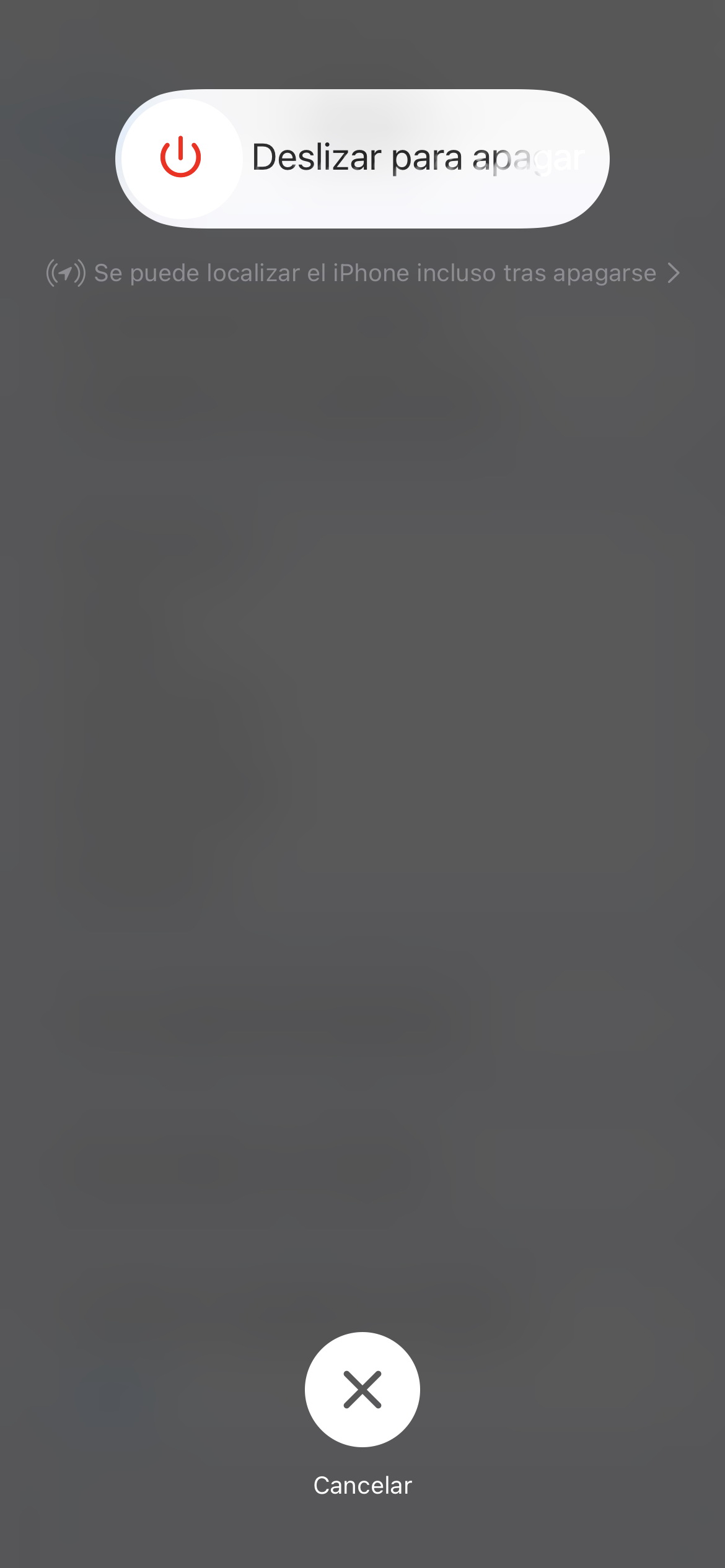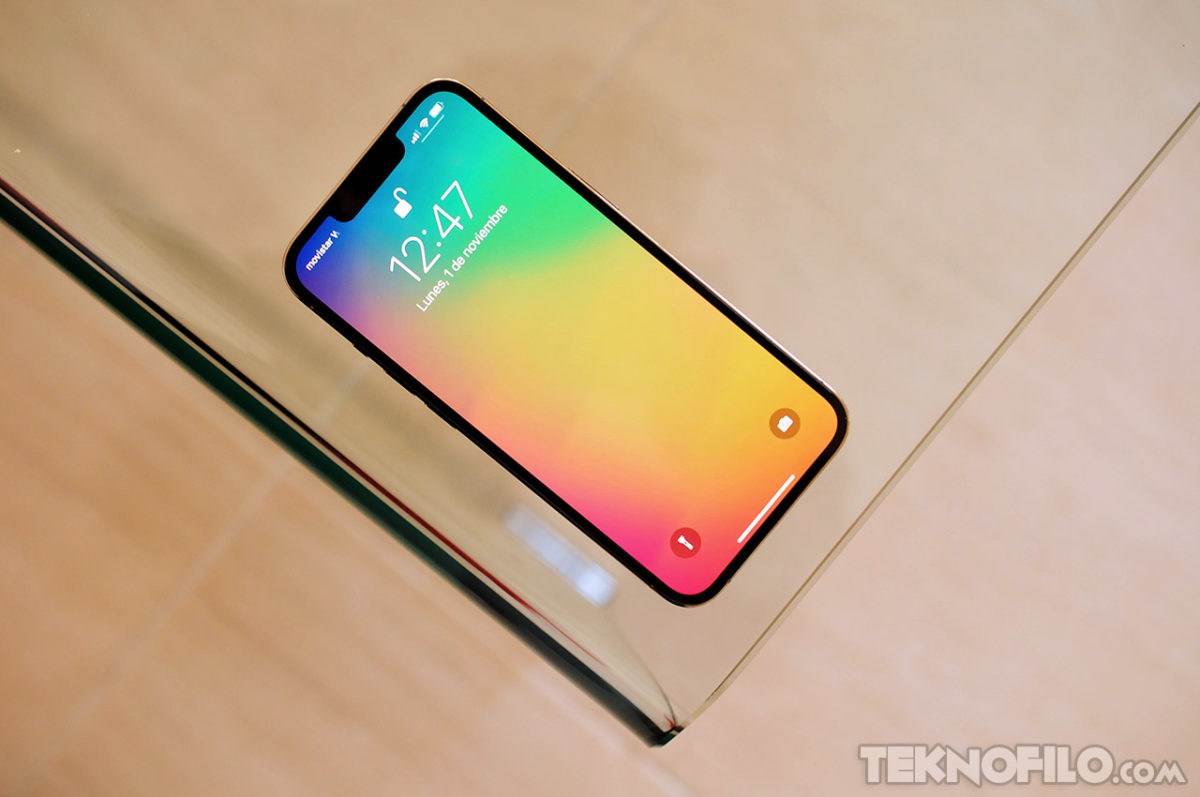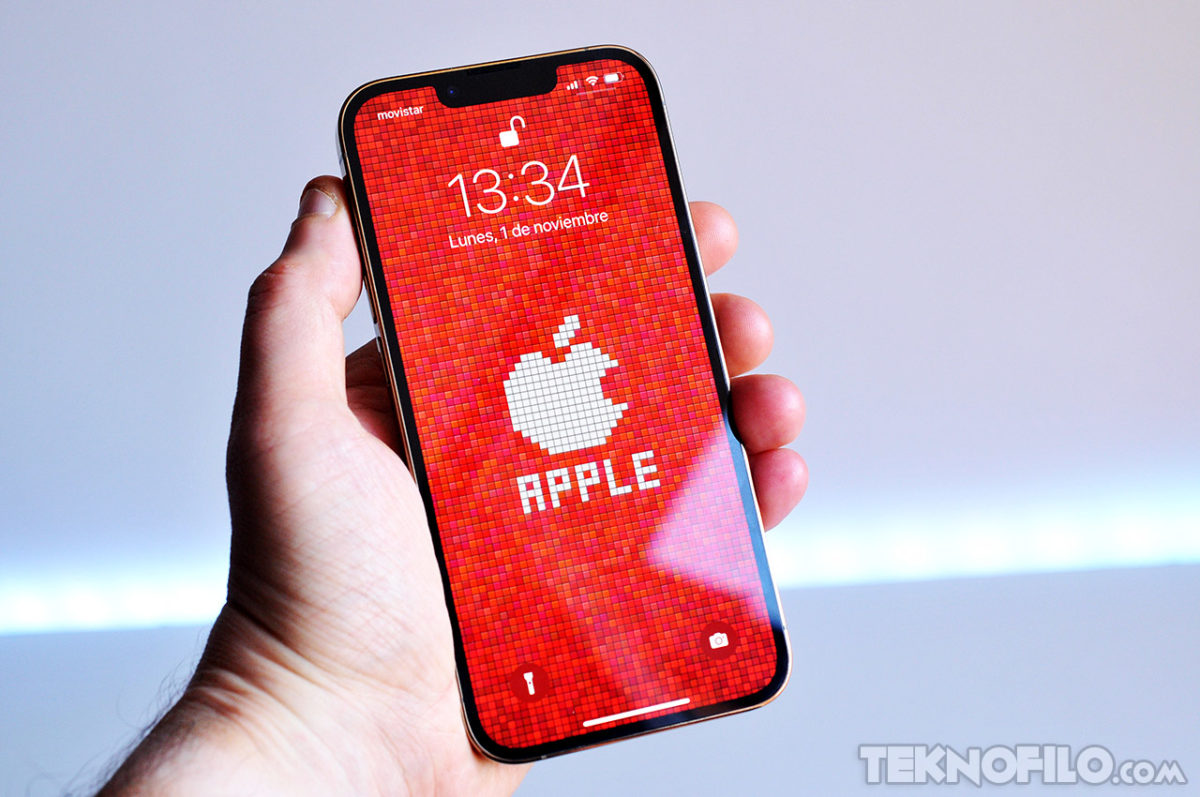Como Reiniciar Un IPhone - Guía Sencilla
¿Alguna vez tu teléfono, ese compañero que siempre tienes cerca, se ha quedado un poco atascado, sin responder a lo que le pides? Es una situación que, you know, can be a little frustrating. Maybe an app just won't close, or the screen seems to freeze right there. Well, there's a pretty common way to get things back on track, a simple trick that many people turn to when their device acts up. It's about giving your phone a fresh start, kind of like when you take a moment to clear your own head. This little action, often called restarting, can really make a difference for those moments when your device feels a bit stubborn or just isn't quite itself.
When your iPhone seems to be having a bit of a moment, perhaps it's not responding to your touch, or maybe an application just decided to take a little break, a quick restart can often solve the issue. It's like, you know, a small reset button for its brain. This process, as a matter of fact, doesn't erase any of your precious pictures, messages, or other important things you have saved. It just helps the system refresh itself, getting rid of those little digital hiccups that can make your phone act a bit odd. So, it's a rather gentle way to encourage your device to behave properly again.
This whole idea of giving your phone a brief power cycle, or what we call restarting, is a very useful thing to know. It’s one of those basic steps that can save you a lot of worry and, you know, time when your device isn't quite doing what you expect. We'll walk through how to do this for different models, because, well, the buttons you press might be just a little different depending on which iPhone you have in your hand. It's a simple process, but knowing the right steps can make all the difference when you need your phone to work right away.
Tabla de Contenidos
- ¿Cómo se hace para reiniciar un iPhone? Pasos Básicos
- Cómo Reiniciar un iPhone X, 11, 12, 13 o Versiones Posteriores
- Reiniciar un iPhone 7 o 7 Plus - Un Método un Poco Diferente
- ¿Qué Beneficios Tiene Reiniciar un iPhone?
- Reiniciar un iPhone Cuando Está Colgado o No Responde
- ¿Qué Pasa Si Mi iPhone No se Reinicia Después de Estos Pasos?
- Apagar y Encender Tu iPhone - La Forma Más Completa
- Reiniciar un iPhone No Borra Información
¿Cómo se hace para reiniciar un iPhone? Pasos Básicos
When your iPhone feels a bit sluggish or an app is just acting out, a simple restart is often the first thing to try. It's, you know, a very common way to fix minor digital snags. To get your iPhone to restart, you generally need to press and hold a button on the side or the top. The exact button, well, that depends a little on which model of iPhone you have in your hand. For many models, you'll be looking for the side button, which is usually on the right side of the device. For some older ones, it might be the button right at the very top. You hold this button down for a short bit, and then a slider will show up on your screen. This slider will give you the option to power down your device. Once it's off, you just press that same button again to bring it back to life. It's a pretty straightforward process, actually, designed to be easy for anyone to do when their phone needs a little nudge to get going properly again. So, in some respects, it's like a quick nap for your phone's system.
This action of turning your phone off and then back on again is, basically, what a restart is all about. It helps clear out any temporary glitches or little bits of information that might be causing trouble. Think of it this way: your phone is always running many things in the background, and sometimes these things can get a little tangled. A restart helps untangle them. It's not a complicated fix, and it's something you can do right at home without needing any special tools or, you know, a lot of tech know-how. Just remember the button, wait for the slider, and then power it back up. It’s a very common piece of advice you'll hear when someone's phone isn't quite right.
Cómo Reiniciar un iPhone X, 11, 12, 13 o Versiones Posteriores
For those of us with an iPhone X, or perhaps a newer model like the 11, 12, or 13, the way you get it to restart is a little different from some of the older phones. These models, you know, don't have a physical home button on the front, which changes how you interact with them a bit. To get these specific phones to power down and then restart, you'll need to use a combination of buttons. It's not just one button you hold down, but two at the same time. You press and hold either the volume up or volume down button, along with the side button, which is on the right side of your phone. You keep holding both of these until you see a power off slider appear on your screen. This slider, when you drag it, will turn your phone completely off. Once it's off, you just press and hold that side button again until you see the Apple logo pop up. This means your phone is starting back up, fresh and ready to go. It’s a slightly different motion, but once you do it a few times, it becomes very easy to remember.
This method, actually, is pretty consistent across these newer iPhone models. It’s a way to make sure you don't accidentally take a screenshot or activate Siri when you're just trying to power down your device. The simultaneous press of the volume and side buttons is a deliberate action, which, you know, helps prevent mistakes. It's a good thing to practice once or twice so that when your phone decides to be a bit unresponsive, you can quickly get it to reset. So, in a way, it's a little secret handshake with your phone to tell it to take a break and come back refreshed. It really helps when your phone is acting a bit stubborn.
Reiniciar un iPhone 7 o 7 Plus - Un Método un Poco Diferente
If you happen to have an iPhone 7 or a 7 Plus, the way you go about restarting it is, well, just a little bit unique compared to both the older models and the very newest ones. The iPhone 7, as a matter of fact, has always had its own particular way of doing things. For these specific phones, you'll need to press and hold two buttons at the same time. You'll press the volume down button, which is on the left side of your phone, and the power button, which is on the right side. You keep holding both of these buttons down together. You won't see a slider pop up on the screen right away. Instead, you keep holding them until the screen goes completely dark, and then you see the Apple logo appear. This means your phone has done a full restart. It's a slightly different action, but it gets the same job done: giving your phone a fresh start when it needs it. This method, you know, bypasses the usual power-off slider, making it a pretty direct way to force a restart.
This particular button combination for the iPhone 7 and 7 Plus is, basically, a forced restart. It's especially useful if your phone is completely frozen and won't respond to anything else you try. Sometimes, an iPhone can get stuck in a loop, or an application can just lock up the whole system. When that happens, this specific two-button press is your friend. It's a reliable way to get your device to respond again without, you know, having to wait for the battery to die or something like that. So, it's almost like a secret emergency button for these models, very handy to know.
¿Qué Beneficios Tiene Reiniciar un iPhone?
You might wonder why restarting your iPhone is such a common piece of advice when things go a bit wrong. Well, there are quite a few good things that come from it. First off, it's like giving your phone a clean slate, more or less. When your phone is on all the time, it keeps a lot of little bits of information and processes running in the background. Sometimes, these can get a little messy, causing apps to slow down, or the phone itself to feel less responsive. A restart helps clear all that temporary stuff out. It's a very simple way to refresh the system without, you know, needing to do anything complicated or technical.
Another big benefit is that it can fix those annoying, small glitches that pop up out of nowhere. Maybe your Wi-Fi isn't connecting right, or your sound isn't working, or an app just keeps crashing. Many times, these little issues are just temporary software hiccups. A restart, as a matter of fact, can often make them disappear. It's like a quick reset for all the little parts of your phone's brain, getting them all to talk to each other properly again. This process is also beneficial because it can help improve your phone's overall speed and smoothness. When your phone has been running for a long time, it can start to feel a bit sluggish. A restart gives it a little boost, making it feel more like it did when it was brand new. So, it's a pretty powerful little trick for maintaining your phone's good behavior.
Reiniciar un iPhone Cuando Está Colgado o No Responde
There are those moments when your iPhone just seems to freeze, completely unresponsive to your touch or any button presses. It's like, you know, it's decided to take a little vacation from working. When your iPhone is "colgado" or "hung up" and won't respond to any commands, a forced restart is your best friend. This is where knowing the specific button combination for your model really comes in handy. It's a very simple way to get a phone that's acting stubborn to listen again. You don't have to wait for the battery to run out, which could take a very long time. Instead, you can take immediate action to get it working again. This process, as a matter of fact, is designed for these exact situations, providing a quick way to break free from a frozen screen or a non-responsive app. It's a pretty direct approach to telling your phone, "Hey, time to wake up!"
The beauty of this method is its simplicity and effectiveness. It's not about digging into settings or, you know, trying to figure out what went wrong with a specific app. It's a universal fix for a phone that's just not listening. This kind of restart, basically, forces the phone's system to shut down and then start fresh. It's like hitting a reset button on a computer when it's completely frozen. It doesn't ask questions; it just performs the action. So, it's almost always the first thing you should try when your iPhone feels completely stuck and won't let you do anything at all. It really helps to clear things up quickly.
¿Qué Pasa Si Mi iPhone No se Reinicia Después de Estos Pasos?
Sometimes, even after trying all the button combinations and giving your iPhone a good chance to restart, it might still refuse to cooperate. This can be, you know, a bit worrying. If your iPhone continues to act up, or if it simply won't turn on after you've tried these steps, then it's time to consider that the issue might be a little more involved than a simple software glitch. In such cases, it's a good idea to look for more help. Apple, as a matter of fact, has a lot of support resources available for situations like these. They have articles and guides specifically for when an iPhone doesn't turn on or when its screen is completely locked and unresponsive. So, it's almost like a sign that your phone needs a bit more than just a quick nap.
If your iPhone isn't working as it should, even after a restart, it could point to a few different things. Maybe there's a deeper software problem, or perhaps, you know, there's a hardware issue that needs a closer look. The support articles from Apple can guide you through more detailed troubleshooting steps. They might suggest things like connecting your phone to a computer and trying to update or restore it, which is a bit more involved than a simple restart. Essentially, if the basic restart doesn't do the trick, it's a good indicator that you should seek out official guidance to figure out what's really going on with your device. It really helps to have those resources ready.
Apagar y Encender Tu iPhone - La Forma Más Completa
While restarting is a quick way to refresh your iPhone, sometimes you might want to fully power it down and then turn it back on. This is, you know, a slightly more complete cycle for your device. Getting information about how to completely shut down your iPhone and then bring it back to life is very useful. This involves holding down the appropriate button or button combination until the "slide to power off" option appears on your screen. You then drag that slider, and your phone will go completely dark. It's a very deliberate way to turn off your device, ensuring that all processes stop. After it's off, you simply press and hold the side button again until the Apple logo shows up, signaling that it's starting back up. This full power cycle can sometimes resolve issues that a quicker restart might miss, as it ensures everything truly stops and then begins again from scratch. So, in a way, it's like a deeper clean for your phone's system.
This method of fully powering off and then on again is, basically, the most thorough way to reset your phone's temporary state. It's a bit different from a forced restart, which is more abrupt. This approach allows the phone to gracefully shut down all its systems. It's generally what people mean when they say "turn it off and on again." It's a fundamental troubleshooting step that can help with a variety of minor performance issues or app glitches. You know, sometimes a complete power cycle is just what your phone needs to clear its head and get back to working smoothly. It really helps to give it a proper break.
Reiniciar un iPhone No Borra Información
One very important thing to remember about restarting your iPhone is that this process does not, you know, erase any of your personal information. It won't delete your photos, your messages, your contacts, or any of your apps. It also doesn't affect the hardware of your device in any way. This is a common concern for people who are new to troubleshooting their phones, but rest assured, a restart is a very safe action. It's simply a way to refresh the software, not to wipe anything clean. Think of it like turning a light switch off and on again; the light bulb itself is still there, and it still works the same way, it just gets a fresh burst of power. So, it's almost like a soft reset for the phone's brain, not a factory reset.
This means you can feel pretty comfortable trying a restart whenever your phone is acting a bit strange. You don't have to worry about losing anything important. Only in very rare situations, like if an update was not complete or if there was a serious hardware problem, might a restart not solve an issue. But even in those exceptional cases, the restart itself won't cause the problem or make it worse. It's a quick, harmless step that can often save you a trip to a repair shop or, you know, a lot of frustration. It really helps to know this, so you can try it with confidence when your phone needs a little pick-me-up.
- Woodridge Hollywood Blvd Movie Theater
- Grateful Shed
- Island 16 Holtsville
- Regal Jack London
- Richmond Animal League

Cómo reiniciar un iPhone 13 paso a paso

Cómo reiniciar un iPhone 13 paso a paso

Cómo reiniciar un iPhone 13 paso a paso